In years gone by, nations were constantly being formed and dissolved as wars engulfed the globe. Various tribes and groups sought to establish their own regions and territories. In the contemporary era, where nearly all boundaries have been drawn, it is quite uncommon for a novel country to be formed. That’s why the proclamation of South Sudan as a separate nation in 2011 received such widespread publicity. The preceding 25 years have marked substantial changes in nation-building (even greater if you consider the period following World War II, when numerous colonial empires permanently collapsed, leading to the independence of their colonies) such that the 25 most recently formed countries (technically 31 when you consider entries number 3, 6, 8, 16, and 17) on this list have barely been around for at most 25 years. Although the disintegration of the Soviet Union resulted in the intriguing histories of many nations on this list, there are a multitude of new countries spanning from the Pacific Ocean, the Arabian Peninsula, and even extending to southern Africa. Stimulate your inner mapmaker with this list of the 25 Newest Countries to Come Into Existence.
Cover Image CC via haveacookie via Deviant Art
Namibia
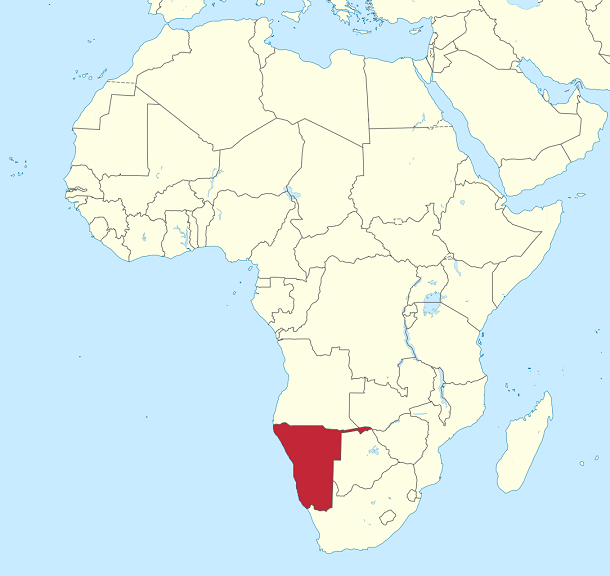 Source: CIA World Factbook, Image: Wikimedia
Source: CIA World Factbook, Image: Wikimedia The second-to-last African country to gain independence, Namibia was a South African territory until 1990. Occupied by Germany after the carving up of Africa, Namibia was occupied by South Africa during World War I; South Africa administered Namibia until after World War II when it annexed the area. The Marxist South-West Africa People’s Organization (SWAPO) launched a guerrilla-based war of independence that raged for over 20 years, despite the United Nations’ recognition of SWAPO as the official representative of Namibians. Full independence was achieved on March 21st, 1990.
Yemen
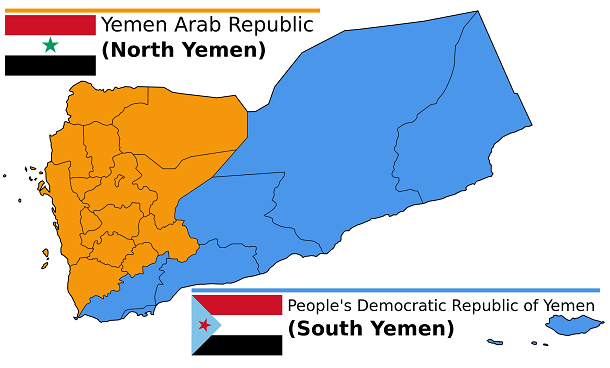 Source: CIA World Factbook, Image: Wikipedia
Source: CIA World Factbook, Image: Wikipedia The Gulf-country of Yemen is embroiled in a deep civil war which has seen major fighting between factions in the north and south. But there’s a reason for the fighting if we look to history. Yemen was formerly split between North and South Yemen. North Yemen, formally the Mutawakkilite Kingdom of Yemen, was controlled by the Ottoman Empire and gained its independence upon the Empire’s demise in 1918. South Yemen, formally the People’s Democratic Republic of Yemen, had become a British protectorate in 1839 and only became independent upon British withdrawal in 1967. Though the two countries unified in 1990, South Yemen seceded in 1994 which led to a period of northern occupation (supported by the United States) and a brief civil war to unify them again. Continued fighting has since occurred, the most serious of which is the modern-day renewed war between northern and southern factions. It’s unclear as of yet, but the fighting may bring a new country to clinch this list’s top spot as the newest country in the world.
Germany
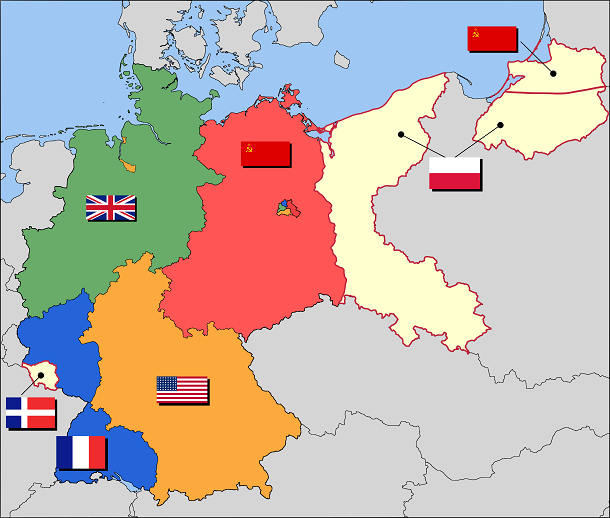 Source: CIA World Factbook, Image: Wikimedia
Source: CIA World Factbook, Image: Wikimedia The modern state of Germany has only existed for upwards of 25 years, something Germans who lived through those tough times were proud to see come to fruition. The country’s history stretches back for most of European history with multiple mergers and divisions, but was most recently divided in 1945 between the western (Allied-backed) Federal Republic of Germany and the eastern (Soviet-backed) German Democratic Republic (GDR). Berlin was also famously divided – the fall of the Berlin Wall meant the last days of the GDR and the reunification of Germany on October 3rd, 1990, making it one of the newest countries to come into existence.
Slovenia
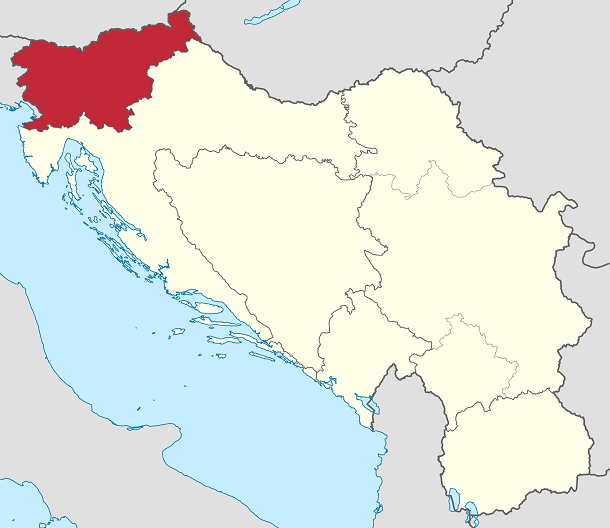 Source: CIA World Factbook, Image: Wikipedia
Source: CIA World Factbook, Image: Wikipedia Slovenia has long played an important role in trade between Asia and Central and Western Europe. Formerly part of the Austro-Hungarian Empire, it united with nearby countries to form the Kingdom of Serbs, Croats, and Slovenes after World War I, soon becoming the Kingdom of Yugoslavia. After World War II, the kingdom became the Socialist Federal Republic of Yugoslavia before breaking up in 1992. Slovenia shares a similar history (see #15) with other Yugoslavian countries (#’s 2, 9, 12, 15), though has always maintained a close history and relationship with Western Europe. As the Soviet Union and Eastern Bloc was collapsing in 1991, Slovenians fought a 10-day war against the Yugoslav People’s Army to become the first of the socialist republic’s states to break off.
Estonia
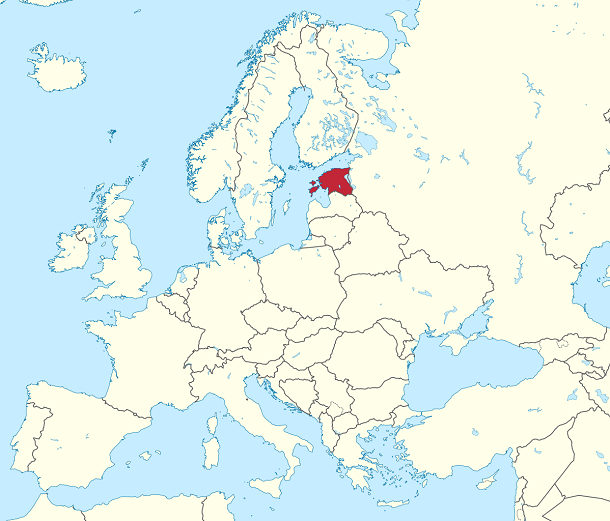 Source: CIA World Factbook, Image: Wikimedia
Source: CIA World Factbook, Image: Wikimedia Located in an economically-important corner of Europe, modern-day Estonia has been controlled by the ruling elites of Denmark, Germany, and Sweden. Sweden gave the country up to Russia after losing the Great Northern War in 1721 and the Russians casually ruled the area until imposing Russification in the 1890’s, causing a nationalist backlash. Following Russia’s October Revolution, Estonia declared its first independence in 1918 before fighting a 14-month war of independence against the Bolsheviks. It would briefly remain free until Soviet occupation turned it into a socialist republic, a condition that would endure until the fall of the Eastern Bloc.
Ukraine
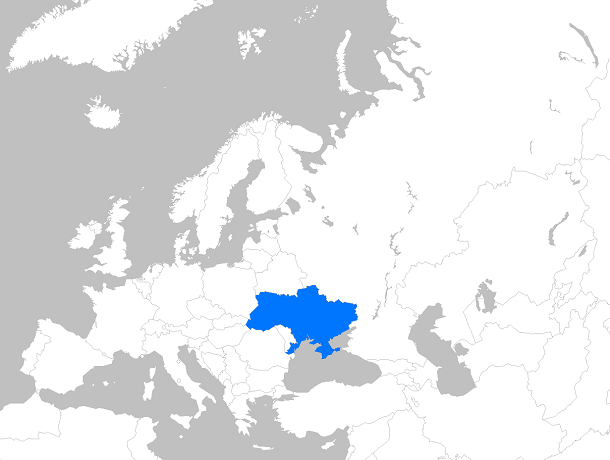 Source: CIA World Factbook, Image: Wikimedia
Source: CIA World Factbook, Image: Wikimedia The home of the first eastern Slavic state (Kyivan Rus), current-day Ukraine was the most powerful state in Europe during the 10th and 11th centuries. Internal division and Mongol invasions greatly weakened the state, leading it to eventually join the Polish-Lithuanian Commonwealth. A mid-1600’s revolution saw the area gain independence from the Poles, only to be taken over in the late 1800’s by the Russians. A short period of independence was achieved after the Russian/October Revolution but Ukraine was reconquered in 1920 and remained part of the Soviet Union until its dissolution in 1991.
Belarus
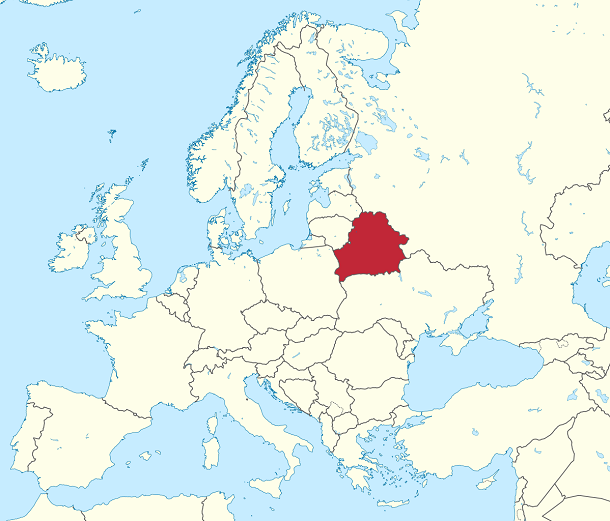 Source: CIA World Factbook, Image: Wikimedia
Source: CIA World Factbook, Image: Wikimedia Out of all the former Soviet republics, Belarus has maintained the strongest ties with Russia, even agreeing to a two-state union at the turn of the last century (which has yet to truly materialize). The lands currently claimed by Belarus used to belong to various other states including modern-day Russia, Poland, and Lithuania. The Belarusian People’s Republic, first declared in 1918, was short-lived, succeeded the following year by the Byelorussian Soviet Socialist Republic. The country’s parliament declared its sovereignty on July 27th, 1990, one year before the official dissolution of the Soviet Union.
Moldova
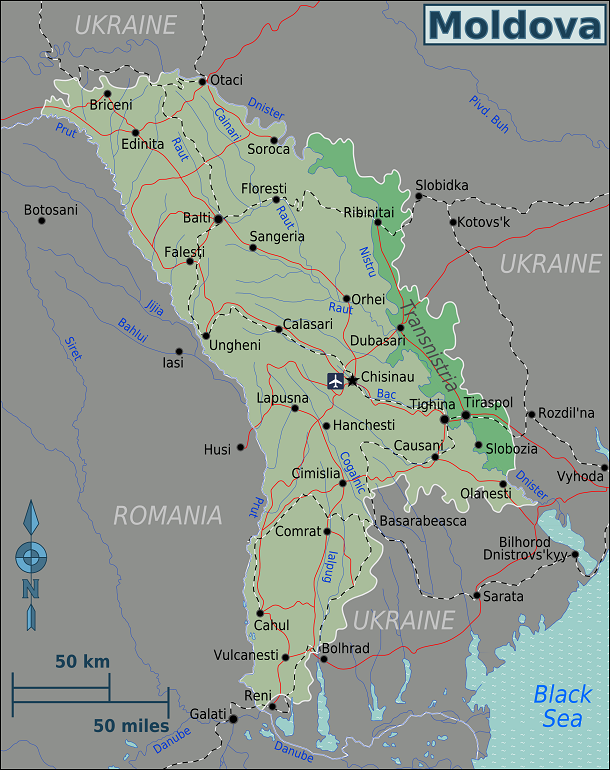 Source: CIA World Factbook, Image: Wikimedia
Source: CIA World Factbook, Image: Wikimedia Nestled between Ukraine and Romania, Moldova has long been a contested area. The Ottomans who controlled the area ceded present-day Moldova to the Russian Empire which went on to impose Russian language and culture. The Russians ruled until the end of World War I when the region voted to unify with Romania. After the 1939 Molotov-Ribbentrop Pact where Germany recognized Soviet spheres of influence, the Soviet Union demanded the region back from Romania, who complied, until later re-seizing it in 1941. The area returned to Russian influence after the war and did not regain its independence until the collapse of the U.S.S.R. in 1991.
Uzbekistan & Kyrgyzstan
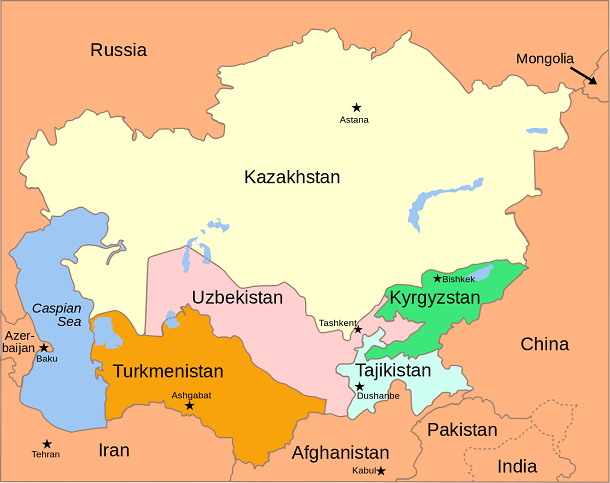 Source: CIA World Factbook, Image: Wikimedia
Source: CIA World Factbook, Image: Wikimedia Neighbors Uzbekistan and Kyrgyzstan are both sovereign countries (but are taking one place on our list so we had space for Yemen and Namibia). Both important countries along the Silk Road, these Central Asian “stans” fell under Russian influence in the late 19th century, along with the other countries in the region. Though the Kyrgyz revolted against the tsar in 1916, the Russians crushed the rebellion. Both countries took the opportunity of waning Soviet power to declare independence on the 1st of September and 31st of August, 1991, respectively.
Azerbaijan & Georgia
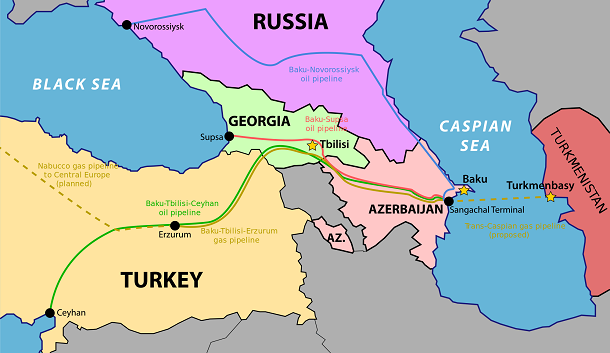 Source: CIA World Factbook, Image: Wikipedia
Source: CIA World Factbook, Image: Wikipedia Similarly to #17, Azerbaijan and Georgia are both sovereign countries (since August 30th and April 9th, 1991, respectively) but are included in one item on our list. Iranian dynasties played a primary role in both countries, establishing dominance until both were annexed by Russia. Both countries were free for a few years after the Russian Revolution where they (along with Armenia) were initially united as the Transcaucasian Democratic Federative Republic, a state which existed for just over three months. In 1921, both Azerbaijan and Georgia were resolutely reconquered by Vladimir Lenin and Soviet forces, becoming Soviet Socialist Republics.
Macedonia
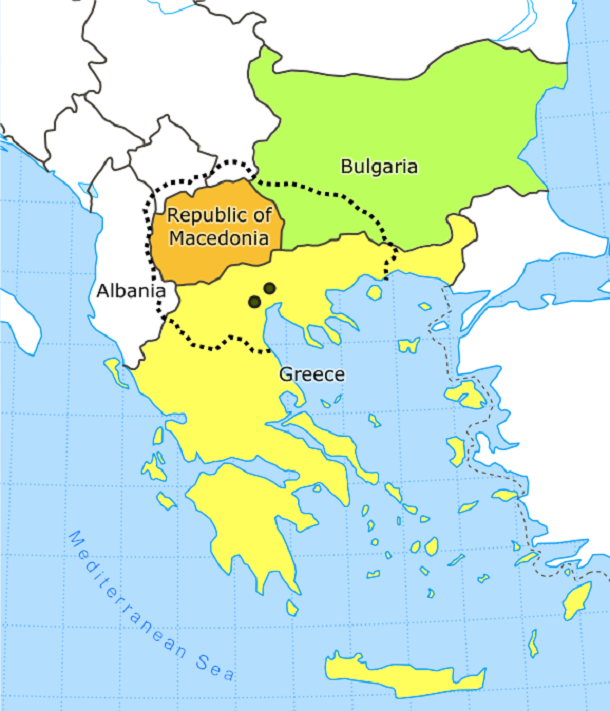 Source: CIA World Factbook, Image: Wikipedia
Source: CIA World Factbook, Image: Wikipedia Originally incorporated into Alexander the Great’s massive empire, Macedonia was at the middle of power struggles between various civilizations including the Byzantines, Bulgarians, Serbians, and Ottomans. Serbia annexed the territory just before World War I (and after the Balkan wars of 1912 and 1913) and repressed non-Serbian activities. As part of Serbia, it became part of Yugoslavia until its breakup.
Tajikistan
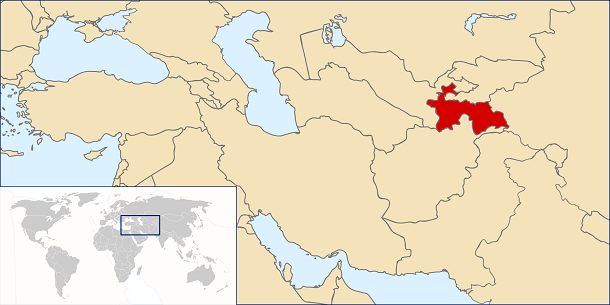 Source: CIA World Factbook, Image: Wikipedia
Source: CIA World Factbook, Image: Wikipedia Mountainous Tajikistan is located to the west of China, south of Kyrgyzstan, and north of Afghanistan. The small country has been ruled by various cultures and faiths over thousands of years, including Zoroastrianism, Buddhism, and Manichaeism. Russia took over the country in the two decades leading up to 1885 and ruled it until the Russian Revolution when indigenous guerrillas pushed them out. In 1925, the Soviet Union fully re-established control, a dominance that would last until its breakup in 1991. A fierce civil war followed until 1997. Conflict has continued to affect the country and, even in 2015, Russia has committed to send more troops to the region.
Armenia
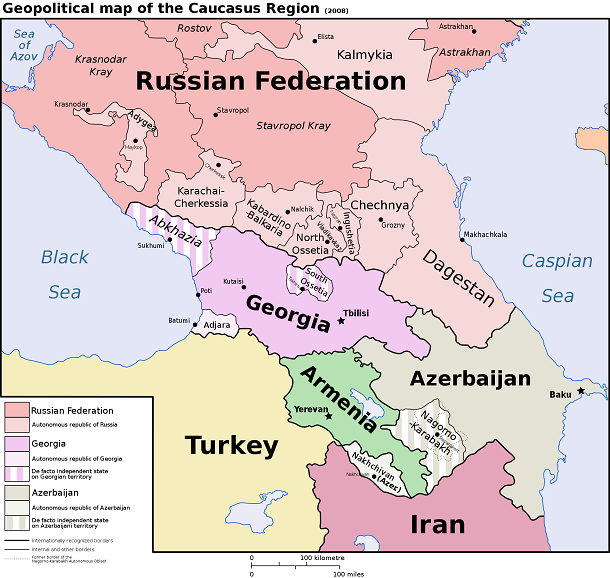 Source: CIA World Factbook, Image: Wikipedia
Source: CIA World Factbook, Image: Wikipedia The first country to adopt Christianity as its official religion, Armenia is most often discussed these days in terms of the Armenian Genocide. Located at a geographically important crossroads, Armenia has been dominated by a variety of great empires including the Romans, Byzantines, Arabs, Persians, Ottomans, and Russians. The Ottoman Empire implemented forced resettlement and other atrocities during World War I in what is still a major point of contention between Armenia and the empire’s successor: Turkey. Jockeyed between the Ottoman and Persian Empires, Armenia ended up as part of the Soviet Union in 1922 before gaining full independence with the fall of the Iron Curtain.
Croatia
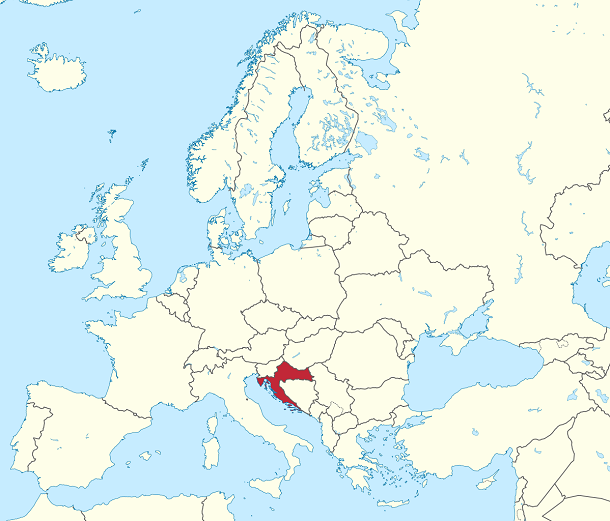 Source: CIA World Factbook, Image: Wikimedia
Source: CIA World Factbook, Image: Wikimedia Originally its own Kingdom of Croatia, the Adriatic Sea-bordering country allied itself with Hungary and later with the Habsburg Empire. After World War I, the country was lumped together into the State of Slovenes, Croats, and Serbs. The entity soon joined the Kingdom of Serbia to establish the Kingdom of Serbs, Croats, and Slovenes (a very creative name). The colloquial name, Yugoslavia, became its official name in 1929. As with other Balkan countries, Croatia declared its independence in 1991. It then saw four years of fighting to remove Serbian armies from Croatian territory.
Turkmenistan
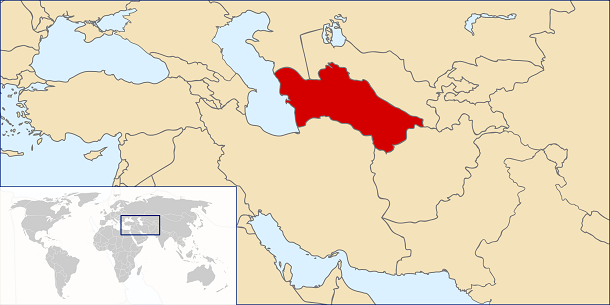 Source: CIA World Factbook, Image: Wikipedia
Source: CIA World Factbook, Image: Wikipedia Positioned on the eastern side of the Caspian Sea (the largest lake in the world), Turkmenistan has been a crossroads for countless different peoples. Long ruled by Persian sultans before being conquered by the armies of Alexander the Great, Muslim marauders, Mongol warriors, and Turkic battalions, Turkmenistan was annexed by Russia in the late 19th century and made into a Soviet republic in 1924. It declared independence in 1991 along with the other “stan” countries.
Kazakhstan
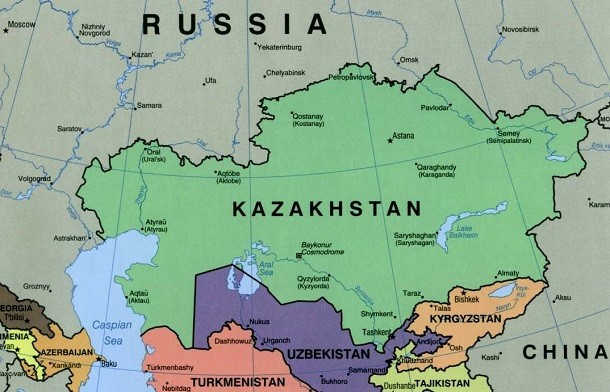 Source: CIA World Factbook, Image: Wikipedia
Source: CIA World Factbook, Image: Wikipedia Before the 18th century, the area that is present-day Kazakhstan was a mix of nomadic Turkic and Mongol tribes, including those of Genghis Khan who ruled the area for a time. Russia conquered the area around 1813 and ruled it until its independence in 1991 when the Soviet Union fell. The natural resources-rich country was the last Soviet republic to declare independence on December 16th, 1991.
Bosnia and Herzegovina
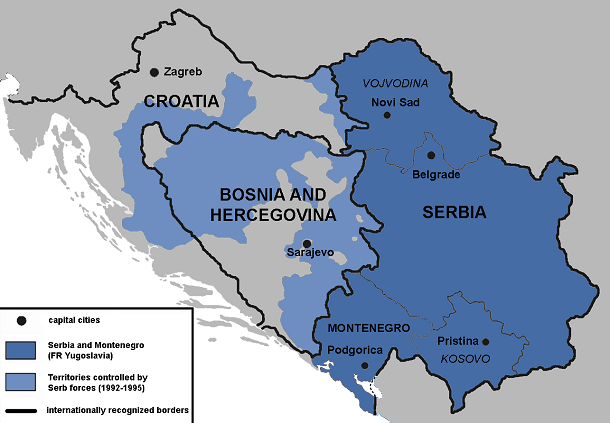 Source: CIA World Factbook, Image: Wikipedia
Source: CIA World Factbook, Image: Wikipedia The area constituting Bosnia and Herzegovina was conquered by the Ottomans in the mid-1400’s. Almost four centuries later, it was annexed into the Austro-Hungarian Empire and later into the Kingdom of Yugoslavia then the Socialist Federal Republic of Yugoslavia. Bosnia and Herzegovina declared independence from Yugoslavia in 1992 followed by three years of war which erupted between the country’s Serbs, Bosniaks, and Croats. The Bosniaks and Croats allied themselves in 1994 and 1995 was the year of peace agreements in Dayton, Ohio. The agreements established two tiers of government, one for the Federation of Bosnia and Herzegovina (mostly Bosniaks and Croats) and another for the Republika Srpska (mostly Serbs), both special regions within the same country.
Slovakia & Czech Republic
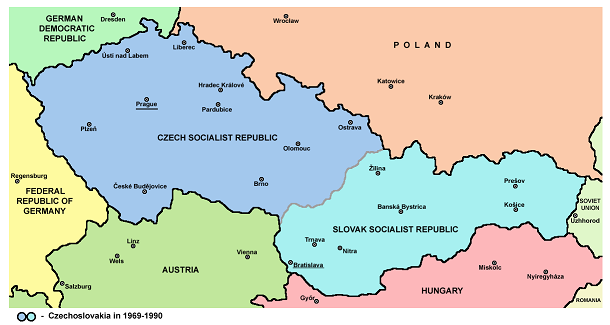 Source: CIA World Factbook, Image: Wikipedia
Source: CIA World Factbook, Image: Wikipedia Slovakia became part of the Hungarian Kingdom in the 9th century. It remained as such until a rise in Slovak nationalism was triggered in the late 1800’s after the Austro-Hungarian Empire increasingly imposed Hungarian culture on their new empire. As for Czech history, the country was originally the Duchy of Bohemia before becoming part of the Holy Roman Empire, Habsburg Empire, and the Austro-Hungarian Empire. Disgruntled Czechs and Slovaks united to form Czechoslovakia after the Empire’s dissolution post-World War I. Just before World War II, Nazi Germany annexed large swathes of the Czech Republic and granted its new ally Slovakia independence (under the forced condition that it support Hitler and the Nazi’s). After Germany’s defeat in World War II, the two countries were merged back together. Harsh repression began once the area came under communist rule and lasted until the 1989 Velvet Revolution brought the Communist Party out of power. The subsequent and peaceful 1993 Velvet Divorce established Slovakia and the Czech Republic on January 1, 1993.
Eritrea
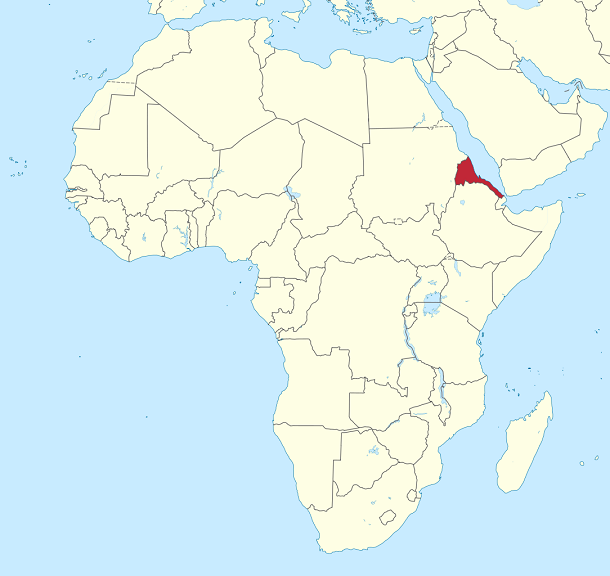 Source: CIA World Factbook, Image: Wikimedia
Source: CIA World Factbook, Image: Wikimedia Eritrea was part of the Italian colonial empire until 1941 when it fell under British administrative control. Despite the United Nations establishing the country as an autonomous region within Ethiopia in 1952, Ethiopia moved in to annex the country in 1961, beginning three decades of violent war. Eritrean rebels won out in 1991 and a 1993 referendum saw Eritreans voting for independence. Despite its sovereignty, border demarcations between the two have not been fully accepted, even resulting in a war between 1998-2000.
Palau & (Marshall Islands & Micronesia)
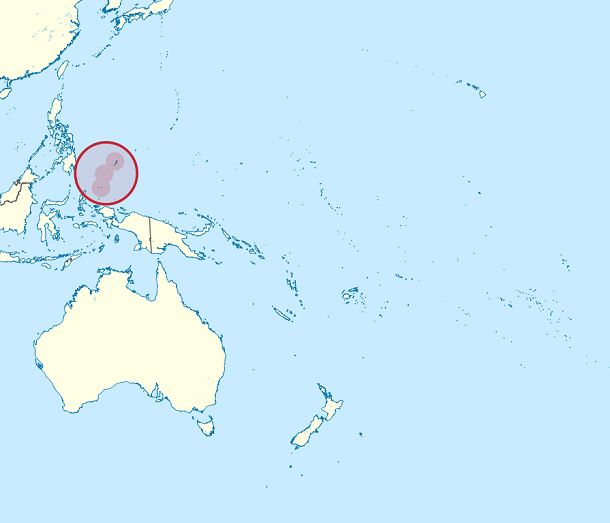 Source: CIA World Factbook, Image: Wikimedia
Source: CIA World Factbook, Image: Wikimedia Filipino migrants first settled the islands of Palau a few millennia ago and resided there until the Spaniards took over in the late 16th century. Swapping hands to the Germans after the Spanish-American War then to the Japanese during World War I, the islands became part of an American-administered UN trusteeship in the Pacific Ocean in 1947. Opting not to join the Federated States of Micronesia, Palau became a sovereign state in 1994 though it remained in free association with the United States. Three years earlier, the countries of the Marshall Islands and Micronesia declared their own independence from the United States though still retain strong ties.
Timor-Leste
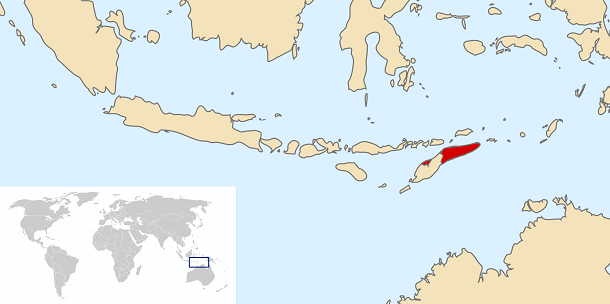 Source: CIA World Factbook, Image: Wikipedia
Source: CIA World Factbook, Image: Wikipedia The Portuguese created the first global empire in history with their advanced maritime skills and tenuous sailors. An important Portuguese colony in the Pacific since the mid-1500’s, Timor-Leste was under continued Portuguese control for over 400 years (barring the Japanese occupation). When the eastern part of the island (Portugal ceded the western part to the Dutch after various regional battles) seceded in 1975, Indonesia invaded, declaring Timor-Leste as Indonesian territory. The next few decades saw bloody conflicts rack the island, especially after the 1999 referendum for independence where Indonesia destroyed most of Timor’s infrastructure. After Australia and UN peacekeepers were brought in to stop the violence, the country finally declared independence in 2002.
Iraq
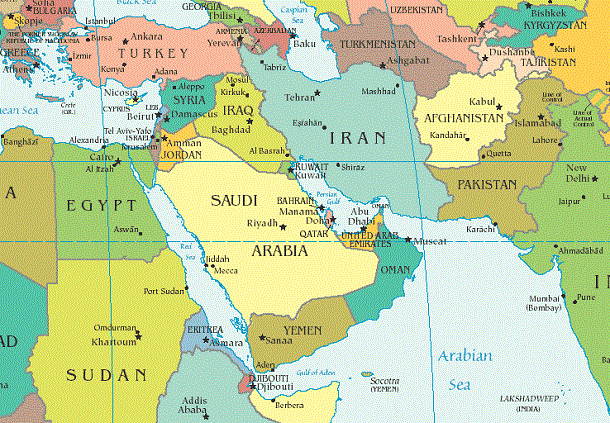 Source: CIA World Factbook, Image: Wikipedia
Source: CIA World Factbook, Image: Wikipedia After the dissolution of the Ottoman Empire, Iraq was occupied by Great Britain during World War I and remained under British administration until its formal independence in 1932. In March 2003, the United States invaded Iraq to force out leader Saddam Hussein. A 2005 national referendum was held where Iraqis approved a constitution and elected their Council of Representatives, marking the dawn of a new Iraqi independence.
Montenegro & Serbia
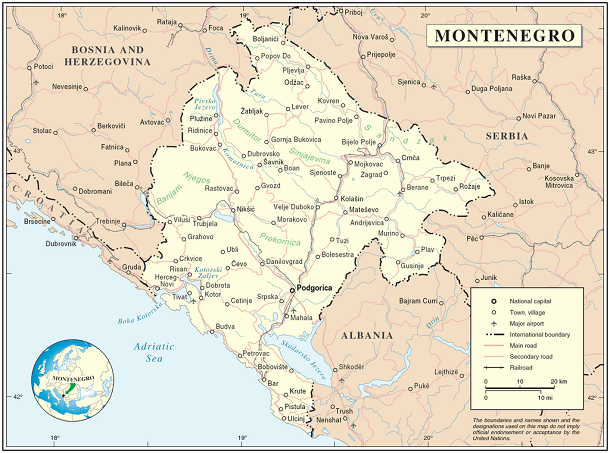 Source: CIA World Factbook, Image: Wikimedia
Source: CIA World Factbook, Image: Wikimedia The second newest state in Europe, Montenegro has endured a tumultuous history under the rule of multiple foreign powers. Originally part of the state of Zeta, the Ottomans took over Montenegro in 1496. The Adriatic country gained its sovereignty at the Congress of Berlin in 1878 but was lumped together in Yugoslavia and its predecessors’ various incarnations before splitting into component parts in 1992. Montenegro and Serbia initially joined together until 2006. That year, Montenegro split when a referendum of 55% of the population voted for independence. (Serbia thus became its own state at the same time.)
Kosovo
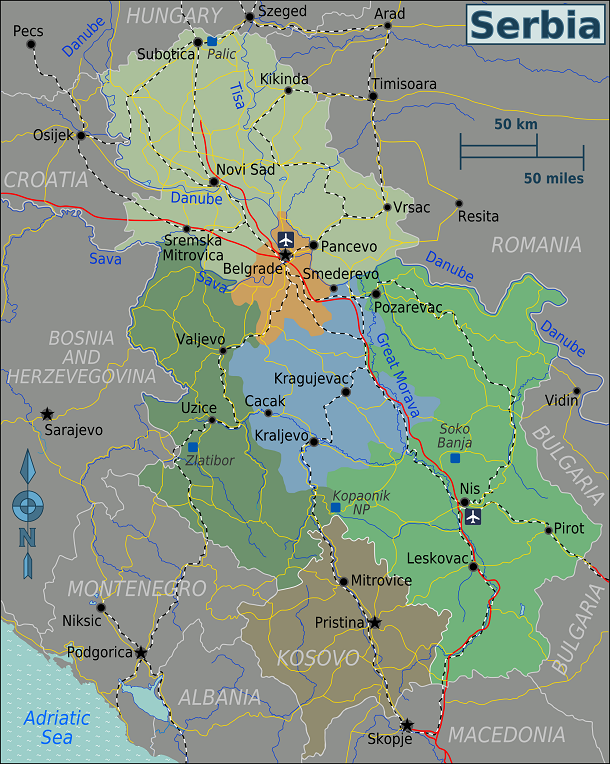 Source: CIA World Factbook, Image: Wikimedia
Source: CIA World Factbook, Image: Wikimedia Kosovo officially declared its independence from Serbia in 2008. Its history stretches back much further, having been a part of the Roman, Byzantine, Serbian and Ottoman Empires. Serbia gained Kosovo back in the 1912 First Balkan War and make it an autonomous province. In response to heightened Albanian nationalism in the 1980’s, Serbia revoked its autonomous status which led Kosovar Albanians to declare independence after a 1991 referendum in favor. 1998 saw Serbia murder or expel almost a million ethnic Albanians in a conflict which had to be stopped by a NATO operation a year later. The United Nations began negotiations which ended in disagreement. Then, on February 17, 2008, the Kosovo Assembly declared the country a sovereign territory. Serbia (and 43% of UN members) still don’t recognize Kosovo’s independence, but over 100 countries – including Egypt, Italy, and the United States – do.
South Sudan
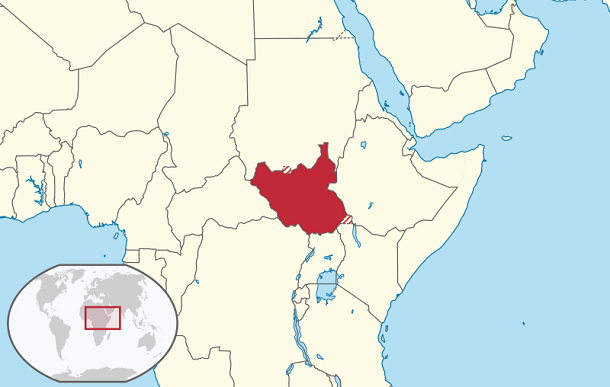 Source: CIA World Factbook, Image: Wikimedia
Source: CIA World Factbook, Image: Wikimedia The Republic of South Sudan is the newest country in the world. Granted independence from England and Egypt (co-rulers) in 1956, the northern, mostly Muslim, part of the country promised that the southern, mostly Christian part, would have full participation in the government. The newly established state went back on its promises resulting in two long wars (1955-72 and 1983-2005). A peace agreement was reached in 2005 which stated that after six years of autonomy, the south would vote in a referendum. With 98% of the population voting in favor, South Sudan became the newest independent state on July 9th, 2011.



























